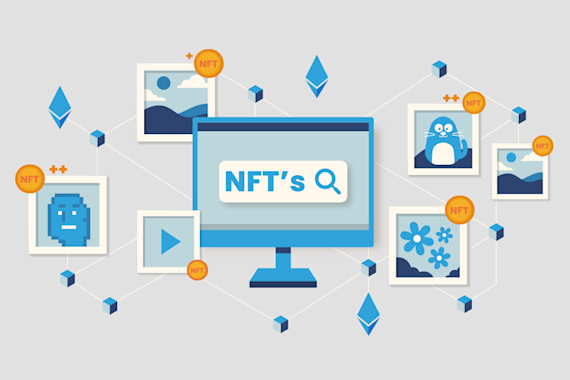In recent weeks, the new artificial intelligence (AI) platforms available for us to “play with” such as ChatGPT or DALL-E are everywhere on the internet. From videos, images, music, poems, or even small computer programs like simple games, it seems like there's nothing AI can't create these days. But should we be scared? We believe it’s not the case for that yet, but the fact is, these innovations make us look forward to what the future of technology will bring, that's for sure. So what will be the technological trends that will mark this new year? That's what we're going to explore in this article!
This is already the fourth year in a row that we use the Stack Overflow Annual Developer Survey, as a base for our projections for the next year in terms of programming languages, databases, web frameworks and cloud platforms that will be most used and sought after by the labor market.
Programming languages, scripting and markup
JavaScript celebrates a decade of leadership as the most popular programming language and it’s no surprise. We would like to point out that those who are learning to code seem to use more HTML/CSS, Python, C++ and C than those who have been doing it professionally for some time.
As for the most loved languages, we find Rust in first place (with 87% of developers answering that they intend to continue using it) close to Python (67.34%), which also remains in the top 10. We also find Elixir (75.46%), Clojure (75.23% ) and TypeScript (73.46%). Thus, it is only natural that Rust, Python and TypeScript lead the table of the most desired languages, with Go, JavaScript and Kotlin soon after. On the other hand, at the bottom of the table and occupying the most feared place, we find Matlab, COBOL, VBA and Objective-C.
Regarding the languages that the market seems to value the most in terms of salary, we continue to find Clojure, Erlang (which rose to second place this year), F#, LISP, Ruby, and Elixir on the top.
Databases
Once again, in the databases department, MySQL continues to be the most popular one, despite being used more frequently by junior programmers, as more experienced developers seem to prefer PostgreSQL. The latter are also more likely to use Redis, Microsoft SQL Server and Elasticsearch. Therefore, it’s no surprise that PostgreSQL continues to be the most loved database and that more professionals want to learn it, followed by Redis and MongoDB. On the other side of the scale, we find IBM DB2, CouchDB and Oracle which, despite being kinda dreaded, are among those that offer the best salary conditions to those who work with them.
Web Frameworks
Looking at web frameworks, this year Node.js (47.12%) and React.js (42.62%) are identified as the most popular ones, both by junior and senior developers. jQuery, despite having lost the first place, remains in the top 3. As for the frameworks that programmers most want to learn, along with Node.js and React.js we also find Vue.js and Next.js.
Last year, the open-source compiler Svelte, created by Rich Harris in 2016, found itself as the most loved, along with ASP.NET Core and FastAPI which, this year, give way to Phoenix (which is the framework that offers a better salary), Deno and Next.js. In the most dreaded, the podium remains the same as the previous year with Angular.js leading it (78.99%), appearing next to Drupal and jQuery.
Cloud Platforms
Once again, Amazon Web Services (AWS) takes the first place as the most used cloud platform. Microsoft Azure managed to climb into second place and moved ahead of Google Cloud Platform (GCP), although the difference was small. However, these platforms are more popular with professional developers, as those who are learning have more contact with Heroku and Firebase.
Which ones should you pick?
The results of these annual surveys allowed us to draw some conclusions about the direction of the IT job market in previous years and that’s why we continue to rely on this information.
Working on your knowledge in Python or Javascript is still a solid bet, as these represent the most sought after and popular languages on the job market (something that we can also confirm by the number of projects we currently have available).
If we focus on web frameworks (which have risen in popularity), in addition to React.js and Node.js continuing to be relevant in the market, it might be interesting to start studying Phoenix and Deno which, despite having a good salary and being loved by developers, still count with few professionals with specialized knowledge.
Finally, speaking of Cloud platforms, the three largest providers (AWS, CGP and Azure) continue to be the most popular and in terms of databases, learning to work with Redis, PostgreSQL or MySQL remains an advantage for any IT professional.
Besides knowing which technologies are most in demand on the market, we are also able to see that remote work continues to grow, as around 85% of the developers who answered are working in companies with some level of remote work (more often in large organizations).

A broader look onto the job market
Following the opening theme of this article and in line with Andrew Bolwell's idea, we decided to ask ChatGPT what would be the 10 technology trends for 2023 based on the 2022 Stack Overflow Annual Developer Survey and it answered the following:
“Based on the 2022 survey and current market trends, some technology trends that could potentially be on the rise in 2023 are:
Artificial Intelligence and Machine Learning
Cloud Computing and Cloud-Native Applications
Microservices Architecture
Serverless Computing
Virtual and Augmented Reality
Internet of Things (IoT)
Cybersecurity
5G and Edge Computing”
Taking into account its popularity in the IT community and even on social networks, where countless videos can be found that portray the abilities of this chat, it is normal that the areas of Artificial Intelligence and Machine Learning lead the media and scientific space in 2023. This represents one of the areas with the greatest potential to grow in the coming year, since it can be applied to several different industries.




